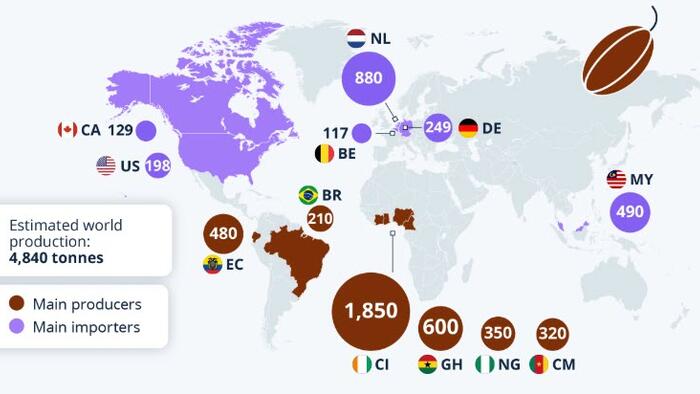


Last year, a cocoa shortage drove up prices for European chocolate makers and consumers.
This was largely due to an exceptionally wet rainy season as well as a viral cocoa disease that severely impacted the 2023/2024 harvest in West Africa. However, the situation is expected to improve this year, according to industry experts.
In a note published at the end of February, the International Cocoa Organization (ICCO) estimated that the 2024/2025 harvest is expected to show a surplus, after three consecutive years of deficit.
As Statista's Anna Fleck shows in the following chart, the global cocoa market relies heavily on harvests in the Gulf of Guinea for its supply.
Nearly 65 percent of the world's cocoa is harvested in just four West African countries: Côte d'Ivoire (38 percent), Ghana (12 percent), Nigeria (7 percent), and Cameroon (7 percent).
You will find more infographics at Statista
South America comes in a distant second place for volume, with Ecuador and Brazil as the main producing countries, accounting for 10 percent and 4 percent of global production, respectively.
The vast majority of the world's cocoa is then exported to Europe and North America, where it is processed into chocolate and primarily consumed.
The Netherlands, Germany, and Belgium, for example, together import approximately 25 percent of the world's cocoa beans. This makes the European Union the world's largest importer of cocoa, accounting for 60 percent of global imports.
The United States and Canada, for their part, together import the equivalent of approximately seven percent of global production.

